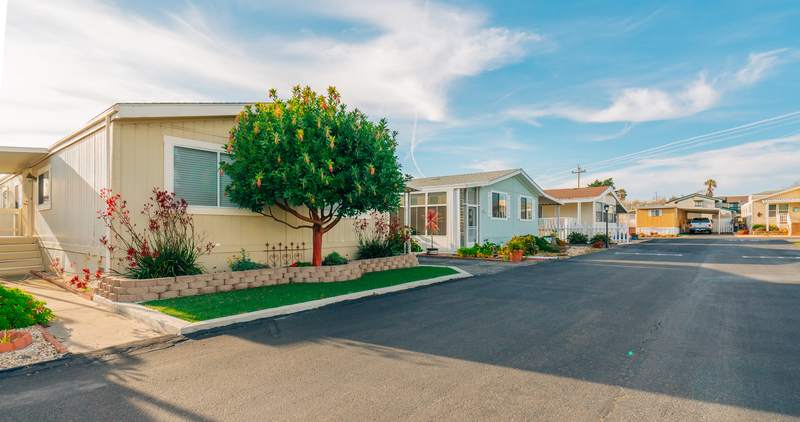Plans to tap your home equity have probably invoked questions about closing costs, interest rates, refinancing and second mortgages. You might also be weighing the pros and cons of a home equity line of credit (HELOC) against a cash-out refinance.
Let’s take a closer look at the ins and outs of a cash-out refinance versus a HELOC so you can make the best decision for your unique situation.
Cash-Out Refinance Vs. Home Equity Line Of Credit (HELOC): Basic Overview
Cash-out refinances and HELOCs are financial instruments that turn your equity into cash. However, they work in very different ways and have separate eligibility requirements. Here is a brief overview:
Type of Financing | Definition | Maximum Amount of Equity Borrowed | Maximum Debt-To-Income Ratio | Minimum Credit Score |
|---|---|---|---|---|
Cash-Out Refinance | A refinance mortgage that allows a borrower to convert their equity into cash. | 80% | 50% | 580 – 620+ |
HELOC | A revolving line of credit that is secured by the borrower’s home equity. | 85% | 43% | 620+ |
The following is a deep dive into the functions and uses of each.
How Does A Cash-Out Refinance Work?
A cash-out refinance is a mortgage refinance that a homeowner can use to reconfigure their current mortgage loan and turn equity into cash. The refinance does away with the first mortgage and gives the homeowner a new mortgage with a higher loan amount. The increase comes from the equity the homeowner withdraws as cash. You can use the money received from a cash-out refinance for any purpose.
Home equity is your home’s value compared to your mortgage balance. For example, if you owe $100,000 on your mortgage and your home is worth $250,000, you have $150,000 of equity. Generally, cash-out refinances allow you to turn 80% of your equity into cash (except for VA loans, with which you can access up to 100% of your equity).
So in this example, you could use a cash-out refinance to gain up to $120,000 and replace your current mortgage with one that accounts for the amount of equity you tapped.
Requirements
Lenders use three primary criteria to determine eligibility for cash-out refinances:
- Home equity: You can’t refinance with meager equity, and lenders look for homebuyers to have 15% – 20% equity remaining after the refinance. That means you could use up to 80% of your current equity amount.
- Debt-to-income (DTI) ratio: Your DTI ratio is your monthly income versus your monthly minimum debt payments. To qualify for a cash-out refinance, your DTI can be a maximum of 50%.
- Credit score: Usually, your credit score must be 620 or higher to qualify for a cash-out refinance. However, if you refinance with a VA loan and you access 90% or less of your equity, you can qualify with a score of 580.
Pros
A cash-out refinance features the main benefits of home equity loans plus several distinctive advantages. The first significant advantage is you’ll only have one mortgage for your house. As a result, your lender has first payback priority since you don’t have a second mortgage to pay like you would with a home equity loan. In other words, if you go through the foreclosure process, your refinanced mortgage will be paid off before any other mortgages or liens.
Another possible upside is lower interest rates, which could reduce your monthly payment and make your mortgage cheaper in the long run. A lower interest rate puts more money in your pocket each month for other expenses.
Cash-out refinances are also usually the best way to consolidate debt because they’re based on your primary mortgage, so you’re getting the lowest possible mortgage rate for your financial profile. Replacing high-interest credit card debt with mortgage debt can be a financial win because you exchange exorbitant interest rates for your potentially lower mortgage rate.
Lastly, if you use the cash-out refinance to improve your home, your mortgage interest might be tax-deductible.
Cons
Cash-out refinances also have drawbacks. For example, your lender will require you to leave a minimum amount of equity within the home. Therefore, the part of your equity that’s accessible may be inadequate for accomplishing your goals, causing you to seek forms of debt that can satisfy your needs but have higher interest rates.
In addition, the interest rate on your refinanced mortgage will reflect the current economy. For instance, if you bought your house when interest rates were low, a refinance now could increase your interest rate. In that case, leaving your mortgage as is and taking out a second mortgage through a home equity loan or using a HELOC might be more financially sound.
Finally, cash-out refinances have closing costs of 2% – 6% of the loan amount. These can be paid up front or rolled into the loan. So if you’re considering using a cash-out refinance because you’re lacking funds, it might be hard to pay upfront closing costs.
Need extra cash?
Leverage your home equity with a cash-out refinance.
How Does A Home Equity Line Of Credit Work?
A home equity line of credit (HELOC) turns your equity into credit, meaning you can borrow against your equity at will instead of receiving a one-time lump sum. You can think of a HELOC as transforming your equity into a credit card you can access during a specified timespan (known as the draw period), typically lasting 5 – 10 years.
During the draw period, you’ll pay minimum or interest-only monthly payments on any debt you’ve incurred. When the draw period expires, the repayment period begins, in which you have 10 – 20 years to repay the whole balance.
When discussing home equity financing, you might also hear home equity loans compared to HELOCs. While they also use your equity to secure the loan like a HELOC, home equity loans are actually installment loans rather than revolving lines of credit.
Requirements
As with a cash-out refinance, your lender will hold your application to set financial requirements for a HELOC, such as:
- You generally must have more than 15% equity in your home based on its current value. And most lenders only allow borrowers to use up to 85% of their equity.
- Your debt-to-income ratio usually has to be less than 43%.
- Your credit score should be 620 or higher, with better scores helping you obtain better interest rates.
Pros
HELOCs grant homeowners numerous advantages. For example, you can use the funds withdrawn for any purpose. Additionally, your interest payments are tax-deductible if you use the money for improvements or additions to your home.
HELOCs also give you more control over your equity so that you only borrow what you need. Borrowing as you go can leave you with a lower total debt than a home equity loan or cash-out refinance, which comes to you in one lump sum.
Repayment for HELOCs is also less stringent because the first 5 – 10 years require interest payments only. This results in lower expenses during the first part of the loan.
Cons
HELOCs aren’t suitable for every situation. First, since it turns your equity into a revolving line of credit, a HELOC makes less sense if you have a sole, giant expense you can’t afford. A home equity loan or cash-out refinance can give you the lump sum needed.
Also, your lender might stipulate specific minimum withdrawals during the draw period, forcing you to borrow more money than you need. The costs of a HELOC can also increase because of expenses such as closing costs, maintenance fees, early payoff fees, inactivity fees and transaction fees.
Another issue to remember with HELOCs is that they typically have variable interest rates. The adjustments might raise your interest rate and make your monthly payments expensive. In other words, the unpredictability of a variable interest rate can wreak havoc on your budget. On the other hand, cash-out refinances and home equity loans can come with fixed rates so your monthly payments will be consistent and unsurprising.
See What You Qualify For
Buy A Home
Discover mortgage options that fit your unique financial needs.

Refinance
Refinance your mortgage to have more money for what matters.
Tap Into Equity
Use your home’s equity and unlock cash to achieve your goals.
HELOC Vs. Cash-Out Refi: Similarities And Differences
Although HELOCs and cash-out refinancing have key differences, they share numerous similarities, such as:
- Because both use your equity as collateral, you risk foreclosure if you can’t afford payments on them.
- Your interest is tax-deductible if you use the funds for home improvements or additions.
- Both usually require you to leave 15% – 20% of your equity untouched.
- You’ll pay closing costs based on the total loan amount.
- You can use funds in any way you wish.
- You’ll likely receive a lower interest rate than with a personal loan or credit card.
- Lenders have similar DTI and credit requirements for both, although cash-out refis give more flexibility with VA loans.
On the flip side, here is how HELOCs and cash-out refinances diverge:
- Cash-out refis usually have a fixed interest rate, while HELOCs have variable rates.
- You’ll receive a lump sum from a cash-out refinance instead of a line of credit you can access for several years.
- If you refinance with a VA or FHA loan, your lender will likely have less strict financial requirements than a HELOC.
- A VA cash-out refinance may give you access to 100% of your equity.
- You’ll have one mortgage after your cash-out refi, while a HELOC will create a line of credit you’re responsible for on top of your existing mortgage.
- A cash-out refinance might have higher closing costs than a HELOC, but you can also roll them into your new loan amount if necessary.
View Your Refinancing Options
See recommended refinance options and customize them to fit your budget.
How To Choose Between A Cash-Out Refinance And HELOC
If you’re stuck in your choice between using a cash-out refinance or HELOC to access your equity, consider using the following steps to help you decide:
- Calculate your equity. Since the amount of equity you have in your home determines your loan amount, you should first find out how much equity is available. If you need to use as much equity as possible, a HELOC could give you more cash on hand.
- Check interest rates. Next, look at the rate for your existing mortgage compared to market rates. If you think you can get a lower interest rate, a cash-out refinance may be the best option. But, if rates are higher than when you got your mortgage, a HELOC could be a better choice.
- Consider different loan terms. Think about how long you want to repay the equity you’ve borrowed. A cash-out refinance pays off your existing mortgage and can give you more time to repay your loan while HELOCs can come with shorter repayment periods.
- Determine your desired funding time. Because funding is a single lump sum with a cash-out refinance, it may take less time to access your equity. HELOCs allow you to access a specific amount of equity over several years, meaning you can withdraw money periodically based on your needs, but it takes longer to convert all your equity.
- Estimate your closing costs. How much can you afford to pay in closing costs? Remember, closing costs for a cash-out refinance are usually higher than HELOCs, but you can roll them into the new mortgage.
When To Choose A Cash-Out Refinance Over A HELOC
Choosing a cash-out refinance is best when you benefit from changing the interest rate on your mortgage and want to have one planned expense. Note that your refinance interest rate doesn’t have to be lower than your original mortgage to be helpful, depending on your circumstances.
For example, let’s say you have $10,000 of credit card debt with a 20% interest rate and a $10,000 auto loan with an 8% interest rate. A cash-out refinance with a 6% interest rate (even if it’s the same as the previous mortgage) will allow you to pay off your debts and leave you with a new mortgage that is $20,000 higher than before plus closing costs. The monthly payment for your new mortgage will be significantly less expensive than payments on your original loan plus your high-interest debts.
When To Choose A HELOC Over A Cash-Out Refinance
A HELOC can help you tackle multiple expenses over an extended period. For instance, you might have three home improvement projects to complete over the next 10 years. However, you only have ballpark figures for the expenses of each one, and you plan on doing one job at a time. You figure the projects will take no more than $50,000 combined, and you have plenty of equity to cover these expenses.
You can take one project at a time and pay only what’s necessary using a HELOC with a ten-year draw period. You’ll access your equity as a revolving line of credit for each project instead of sitting on a lump sum you need to start repaying immediately. At the end of the draw period, you’ll only pay for the funds used.
The Bottom Line
Cash-out refinances and HELOCs both allow you to turn your equity into cash for any financial needs. In addition, both have similar financial requirements and provide tax deductions if you use the funds for home improvements.
However, crucial differences separate the situations in which these financial tools are helpful. Specifically, cash-out refinances are best for large, singular expenses and can provide excellent interest rates. On the other hand, HELOCs transform equity into revolving credit you can access repeatedly. HELOCs also have variable interest rates that correlate with market trends, possibly destabilizing your monthly payments.
Your equity is a powerful financial tool that can help you get ahead.

Ashley Kilroy
Ashley Kilroy is an experienced financial writer who writes for solo entrepreneurs as well as for Fortune 500 companies. She is a finance graduate of the University of Cincinnati. When Ashley isn’t helping people understand their finances, you may find her cage-diving with great whites or on safari in South Africa.












